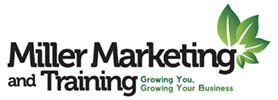Consider Your Prospects
“Every time you make a sale, you’ve just lost your best prospect.” This bit of wisdom was given to me by a veteran sales pro who believed prospecting, or continually searching for individuals and companies as potential clients, is essential for every successful selling career.
Prospecting is the initial step in the entire sales process, and since making any sale obviously requires a buyer, let me suggest this helpful Nike-inspired mantra: “Do it, do it right and do it often.” Without ongoing prospecting, salespeople will be forced into what is, in my opinion, the least effective form of selling: cold calling. But if you implement essential prospecting techniques, I believe you’ll never have to make another cold call.
Look At It This Way
To fully understand the concept of prospecting, let’s consider an analogy to your favorite Janet Craig grower. If your grower sells 100, 10-inch Janet Craigs a month, he should be planting the same amount every month, and have hundreds more in various stages of production in order to stay in business.
Similarly, salespeople need prospects to stay in business. If we want to make one sale a week, we’d better have five to 10 new prospects each week. Moreover, all of our prospects should be in carious stages of “production.” In other words, some may need a phone call this week, and others may require a proposal. Still others may be ripe for the “harvest,” meaning a closed sale.
However, to enjoy these fruitful times, we must “plant” mew prospects every day, since not doing so will eventually lead to a salesperson’s worst nightmare: an abundance of plants to sell, but no one to buy them.
Let’s begin with how to identify interiorscape prospects. Several years ago, I attended a course on selling that required each person to person to write a one-page description of his best sales prospect. Since everyone in the class represented different industries, each person’s account varied. This exercise taught me some great lessons about prospects specific to the industry. The people I believed were potential clients were actually not very good prospects at all. Plus, I discovered huge, untapped gaps in the market that I had simply overlooked.
I also realized we are all victims of paradigms which limit our vision of reality. Our backgrounds and experiences determine how we prejudge many things – including sales prospects. For instance, after spending 10 years in the food-service industry, I entered the interiorscape business thinking restaurants were some of my best prospects (no laughing, please). With apologies to my friends in that line of work, restaurants now rank pretty low on my list because they have low light condition, high traffic and limited maintenance times – not to mention south Florida’s slow summer season, which makes restaurants a really slow pay (or better said, no pay).
Appropriate Spaces
Therefore, my first qualification for an interiorscape prospect is a well-lit interior space. We must recognize our interior plants’ low-light limitations. While sometimes we must “cheat” on light, the reality is there are places where plants simply cannot live.
Charles Powell, co-author of The Healthy Indoor Plant, calls these areas “presentation spaces” – a polite name for areas with negative-five foot candles. His point? Don’t expect a plant to live there; instead, expect it to decline. A prospect with one or two presentation spaces in an account of 30 plants is doable. However, an entire interior space with nothing but plant-eating black holes should be awarded to the competition. This will probably quickly eliminate many non-prospects (unless, of course, you have a silk division in your company.)
Other Points To Think About
Another key characteristic of a great interiorscape prospect is image consciousness. Our plants have a tremendous ability to transform an interior, making a client’s dull space exciting, a drab place inviting and a cold space warm. Look for prospects whose personalities or environments are enhanced by these benefits. if you’re targeting residents, consider professionals’ busy lifestyles, high incomes and upscale homes. It may sound obvious, but by first identifying these qualities, we can eliminate many unprofitable activities. Consider other characteristics prime prospects may exhibit.
Are they:
- Consumer oriented?
- Placed within a stable industry?
- Health conscious?
- Prompt in their payment of bills?
- Confined to an interior space?
- Concerned about the environment?
Do they have:
- Significant customer traffic?
- Upscale interior furnishings?
- Accessible hours of maintenance?
- Concern for employee, patient or resident moral?
- Love for the outdoors?
- Reputation for quality and excellence?
- Local decision makers?
Needs Vs. Wants
Another thing to look for in prospects is a need for our services as opposed to a mere want. The key is there will be a lot more people who need an interiorscaper than those who merely express a desire for our services. Providing professionally maintained plants is a unique, valuable service that fills many needs in the marketplace – something you’ll discover when you complete an interiorscape-prospect profile of your market.
Our job as salespeople is to ask enough questions to reveal prospects’ needs, a developed skill, which will be, discussed in more detail in future articles. Only when we fully understand and identify prospects’ requirements can we sell our services as the solution.
Which Way To Go
Now that we’ve identified our best prospects, we can find them in as many ways and places as possible. If you have only one way of bringing in qualified prospects and this source is eliminated, you’re in big trouble. However, if you lose one source or prospects out of the eight to 10 sources you employ, it’s frustrating – but not a catastrophe.
For example, when Domino’s Pizza entered a small New Jersey town, it quickly captured a sizable share of the local market’s pizza eaters. As a result, the area’s established pizza parlors lost many longtime customers. However, one pizza entrepreneur had a brilliant idea to run a special ad which read, “Bring in any Domino’s Yellow Pages ad and receive 50% off your pizza.” This effectively eliminated Domino’s Yellow Pages prospects in the market.
But was the Yellow Pages advertising Domino’s only source of prospects? I don’t think so! The company uses many different ways to attract pizza-eating prospects, including coupons, direct mail, radio and TV ads, newspaper and magazine ads, as well as billboards, guarantees and add-ons. Like Domino’s, interiorscape salespeople must cultivate and constantly use several methods of prospecting. The following are some of my favorite techniques.
Direct Mail & Telemarketing
Sales managers and marketing specialists agree direct mail and telemarketing are the most effective prospecting methods of this generation. No other form of marketing has the ability to target an audience like direct mail, which I believe should always be accompanied by telemarketing.
The three essentials for effective direct mail are the list, the piece and the offer. I hand pick names for the list, and send mail to them in small quantities so each prospect can be followed up by phone within a week. The direct mail piece should be highly visual – especially in our industry, since we’re selling visual appeal. Direct mail without some artful pictures of plants isn’t as effective as it could be.
Next, the offer should prompt the recipient to take some form of action. Most prospects, however, will not take action, even if your offer is very generous and attractive – such as a free gift or some type of limited trial. Therefore, I strongly recommend a follow-up phone call. But remember, you can’t sell plants over the phone, so the follow-up call is mainly for selling the appointment. Direct mail and telemarketing prospecting will ensure you’ll have new prospects to call on every week.
Professional Joint Ventures
My wife once shared with me a great lead she got from one of her clients. The client, Lisa, works for a closet-organizing company and frequently meets with upscale homeowners. Lisa’s lead was an easy sale for me because it was a qualified prospect that had a need and desire for my services. Now, she and I have a joint-venture relationship in which I pay her for qualified leads who eventually become customers.
Who do you know in your market who is already selling to some of your prime prospects? Just think of all the different salespeople who could be giving you qualified leads, including interior designers, pest-control providers, telephone installers, business machine sales representatives – to name just a few. Their commission checks could be paid monthly, just as you get paid for maintenance service, which also is a great reminder to your source it’s time to provide more leads.
Companywide Sales Efforts
Ask Harvey Mackay, author of Swim With The Sharks Without Being Eaten Alive, how many sales people he has, and he’ll tell you 300, which happens to be the number of people he employs. Mackay understands the value of establishing the sales mind-set throughout his entire organization.
For an interiorscape company, the maintenance technician is a valuable source of leads. No one in your company (not even the salesperson) visits the territories and customers you service more than technicians, and if they’re properly motivated, they’ll hear and see opportunities for new sales every week. Part of this motivation should include money – at least equal to the amounts paid for leads from other sources.
Club & Association Memberships
A commercial real estate broker recently turned down my offer to pay him for leads because he already works with an interiorscape firm that belongs to his real estate trade group. As he described in his letter, “I try as much as possible to do business with other members.”
Referrals & Add-On Sales
The best referrals come from loyal customers, who are a source of leads for people who share their interests and desire for live plants. Remember, it’s not who you know, it’s who the person you know knows. You know?
It’s also been said there are three ways to gain new business: new customers, add-on sales to existing customers and repeat sales to your existing customer base. By far, the most difficult and expensive way is to add new customers. Don’t forget that your existing client base is a huge source of potential new sales.
Ways To Get Your Foot In The Door
Other sources to consider for prospects include:
- Promotions – for example, gift plants for Secretary’s Day
- Advertising – consider trading your plant services for the many different advertising opportunities in your market
- Business after-hours events (i.e. a business card exchange)
- Construction in progress
- Lists of new building permits
- Yellow Pages (not for advertising, but as a source of leads)
- Trade shows (trade plants for booth space)
- Contests
- Raffles
- Trial-offer coupons
Limitless Possibilities
By no means is this an exhaustive list. The methods and techniques for finding prospects are limited only by your imagination and creativity. Did you make a sale today? Congratulations! You just lost your best prospect. Do you have a





